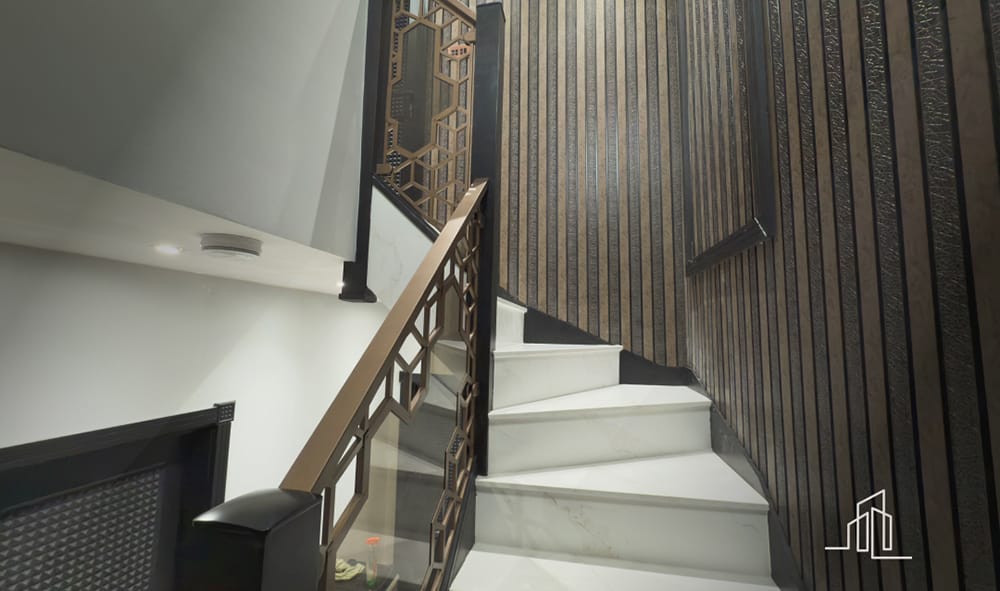What Should a Staircase Be Like in a House with Children?
Undoubtedly, when you are planning to build a staircase in your private home, you need to take many factors into account. For example, consider your budget, the features of the materials, and the shape of the structure. However, don’t forget to think about the main thing – who will use the staircase regularly.
If you have small kids in your family, you need to keep this in mind when planning the project. A staircase is a construction that can become a dangerous and traumatic place in the house, especially for kids. This is why you need to know how to create a staircase that is safe for children. Read more about what a staircase should look like in a home with children in this article!
Key Elements for Kid-Friendly Staircases
According to statistics, there are more than one million staircase injuries worldwide. Children are especially at the zone of risk. Why is it so? It can be difficult for them to climb high staircases. One of your responsibilities as parents is to keep your children safe. That’s why we decided to prepare this article, where we will look at three key points to make a safe staircase for children.
1. Safe Handrails
Handrails play a key role in keeping children safe on the staircase. They should be installed on every landing and be suitable for the height of children. Handrails should be strong enough to withstand the stresses caused by leaning on them. It is important that they do not have sharp corners or protruding parts that could cause injury. An additional safety measure can be the installation of handrails along the railing, which will allow children to hold on securely when climbing up and down.
The materials used for handrails should be environmentally friendly and pleasant to the touch to avoid skin irritations for children. A good choice would be wooden or plastic handrails covered with a smooth protective layer. The design of the railing also plays an important role: it is best to choose classic models without excessive decorative elements to avoid injuries.
2. Steps with Optimum Angle
Based on the BS 5395-1:2010 staircase construction regulations in the UK, step heights should be between 150mm and 200mm in private properties. Obviously, it is best to choose the lowest value possible. The steps of a staircase in a home with children should have an optimum angle of inclination to ensure comfortable and safe movement. It is recommended that the angle of inclination of the stairs does not exceed 30 degrees.
The width of the steps is also important: it should be at least 25-30 centimetres to ensure a comfortable footing. The materials of the steps should be durable and non-slip. A good choice is to use wooden or rubber coverings with anti-slip overlays. You should also pay attention to the presence of ridges on the edges of the steps, which can prevent accidental slips.
3. High-quality lighting system
High-quality staircase lighting is an important aspect of child safety. It should be consistent and sufficient to ensure that each section of the staircase is clearly visible. It’s no secret that there are several staircase lighting options available today. If you have young children in your family, a smart LED lighting system is a great option. This means that each staircase is illuminated individually when a sensor detects movement.
Other Tips for Kid-Friendly Staircases
Actually, there are many other ways to make your stairs safer for children of different ages. We have prepared some useful tips for you to use:
- Add a non-slip coating to your steps. Steps made of materials such as natural stone and glass can be too slippery due to the polish. You can purchase special non-slip mats for the steps.
- Install child-proof railings. If you have a small baby who can’t walk on their own but can crawl, you need a baby fence. This special gate will keep your child from being able to climb up or down the stairs.
- Choose rounded edges. During the planning stage, it is best to favour rounded shapes. In case of a sudden fall, rounded shapes will not be able to cause serious injuries.
Naturally, consider the age of the child if you are planning a staircase. For example, experts advise against letting children under the age of 3 walk up and down the stairs unsupervised.
V.P Stairs – Staircases That Suit Everyone
The best solution to ensure the safety of your kids when using a staircase is to call in the experts. A properly designed staircase tailored to your specifications will fulfil all the three main points such as functionality, safety, and aesthetics.
The experts at V.P Stairs are here to help you design and build a turnkey staircase in the UK. Take a look at our finished projects from our portfolio to see how we bring together all the key elements of a safe staircase. We take a personalised approach to each client, considering the requirements and wishes of each project. Would you like to get a free consultation? All you need to do is leave a request on our website or contact us in any convenient way.
2 Comments
-
Michael Smith
It is best to purchase removable designs that limit the passage of stairs for children. This does not require a large investment or remodelling of the structure.
Comments are closed.


Emily Johnson
Undoubtedly, staircases should be safe for everyone. Children, the elderly and people with disabilities should be able to move normally between floors.